White wine is a popular alcoholic beverage that comes in a variety of colors, ranging from pale yellow to deep gold. While many people believe that the color of white wine is simply a matter of preference, there is actually a lot that can be learned about a wine by examining its color. In fact, the color of white wine can be a key indicator of its flavor profile, level of sweetness, and even the grape varieties used in its production.
Some white wines are naturally darker or lighter than others, depending on the grape varieties used and the winemaking process. For example, Chardonnay is typically a pale yellow color, while a wine made from the Viognier grape may be a deeper shade of gold. Additionally, some white wines may darken as they age, while others may become lighter. By understanding the different colors of white wine, wine enthusiasts can gain a deeper appreciation for the nuances of this beloved beverage.
Characterizing White Wine by Color
White wine is a popular choice among wine enthusiasts, and one of the ways to differentiate between different types of white wine is by their color. The color of white wine can provide a range of information about its taste, texture, and age. In this section, we will explore how to characterize white wine by color.
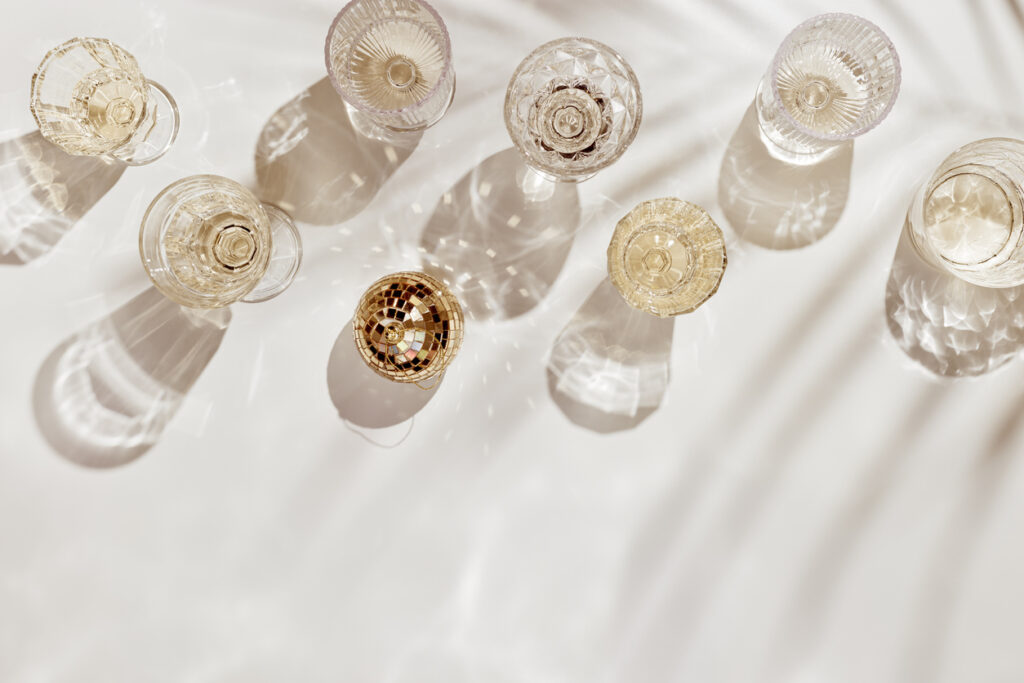
Pale White Wines
Pale white wines are typically light in color and have a low level of saturation. They can range from a pale green-yellow to a copper-gold hue. The color of pale white wines is an indication of their acidity and freshness. These wines are usually crisp, light-bodied, and refreshing with subtle flavors of citrus, green apple, and pear.
Some examples of pale white wines include:
- Pinot Grigio
- Sauvignon Blanc
- Albariño
- Vermentino

Medium White Wines
Medium white wines have a slightly deeper color than pale white wines. They can range from a light straw color to a deeper golden hue. The color of medium white wines is an indication of their body and complexity. These wines are usually medium-bodied with a balance of acidity and sweetness. They have a range of flavors including tropical fruits, peach, and honey.
Some examples of medium white wines include:
- Chardonnay
- Chenin Blanc
- Roussanne
- Viognier
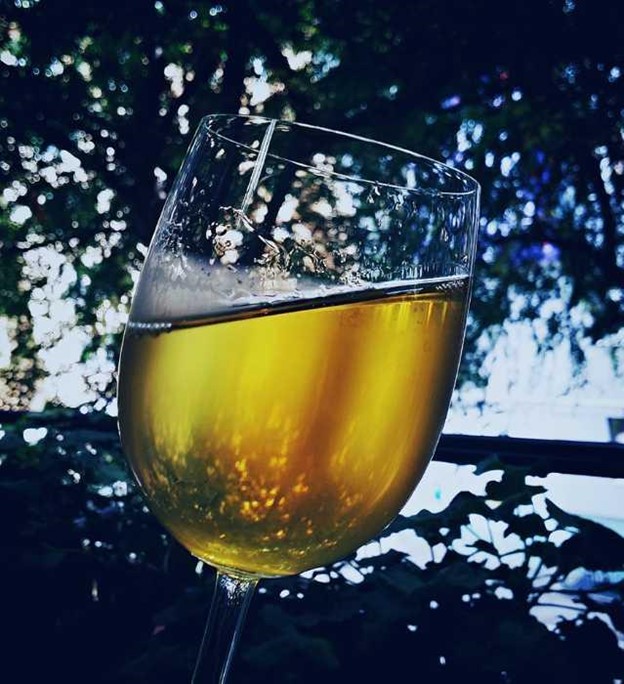
Deep White Wines
Deep white wines have the deepest color of all white wines. They can range from a deep gold to a rich amber hue. The color of deep white wines is an indication of their richness and age. These wines are usually full-bodied with a complex flavor profile that includes flavors of honey, caramel, and toasted nuts.
Some examples of deep white wines include:
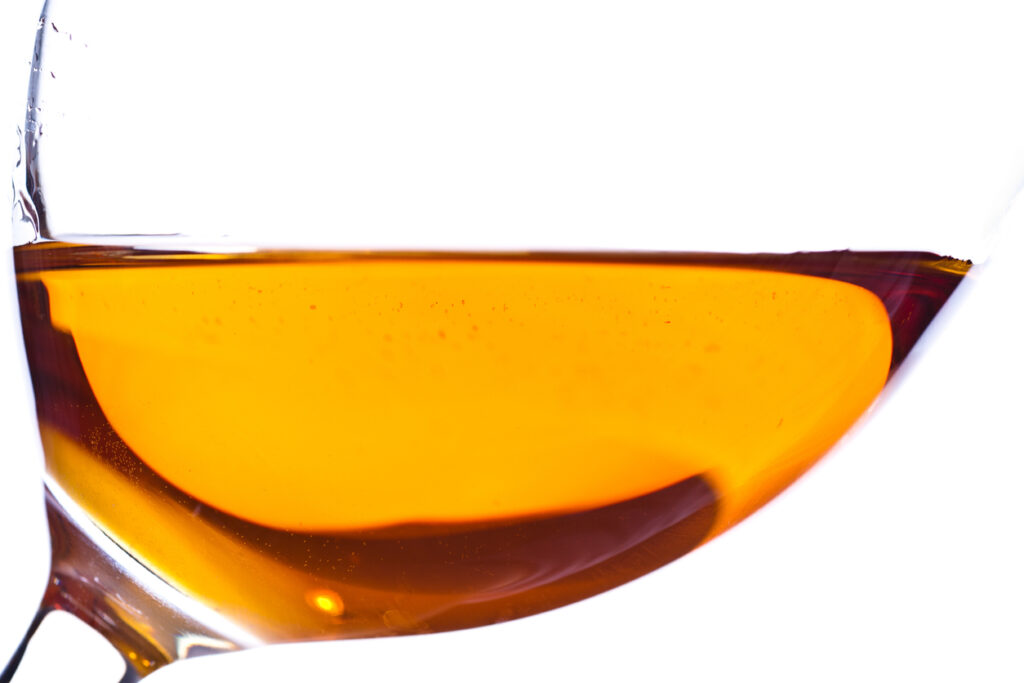
In conclusion, the color of white wine can provide a range of information about its taste, texture, and age. By understanding the color of white wine, you can better appreciate the complexity and nuances of different types of white wine.
Pale White Wines
Pale white wines are known for their light color and delicate flavors. They are typically made from grapes that have thin skins and are not aged in oak barrels. The color of pale white wines can range from watery-white to a bright yellow-golden color that deepens and browns as they age.
High Acid Wines
Pale white wines with high acidity are crisp and refreshing. They are perfect for pairing with seafood and light salads. Sauvignon Blanc and Pinot Grigio are two of the most popular high acid pale white wines.

Low Acid Wines
Pale white wines with low acidity tend to be smoother and creamier. They pair well with richer dishes like creamy pastas and chicken dishes. Viognier is a popular low acid pale white wine.
When it comes to pale white wines, there are many different grape varieties to choose from. Here are a few examples:
- Chenin Blanc: This grape produces a pale white wine with high acidity and flavors of green apple and honey.
- Semillon: This grape produces a pale white wine with low acidity and flavors of lemon and honey.
- Unoaked Chardonnay: This pale white wine is crisp and refreshing with flavors of green apple and citrus.
- Oaked Semillon: This pale white wine is aged in oak barrels and has flavors of vanilla and toast.
- Sauvignon Blanc Blend: This pale white wine is a blend of Sauvignon Blanc and other grape varieties. It has high acidity and flavors of grapefruit and lime.
- Oaked Italian Trebbiano: This pale white wine is aged in oak barrels and has flavors of vanilla and honey.
- Oaked Antao Vaz: This pale white wine is aged in oak barrels and has flavors of pear and vanilla.
- Oaked Verdejo: This pale white wine is aged in oak barrels and has flavors of peach and apricot.
- Soave: This pale white wine is made from the Garganega grape and has flavors of lemon and almond.
- Muscadet: This pale white wine is made from the Melon de Bourgogne grape and has flavors of lemon and sea salt.
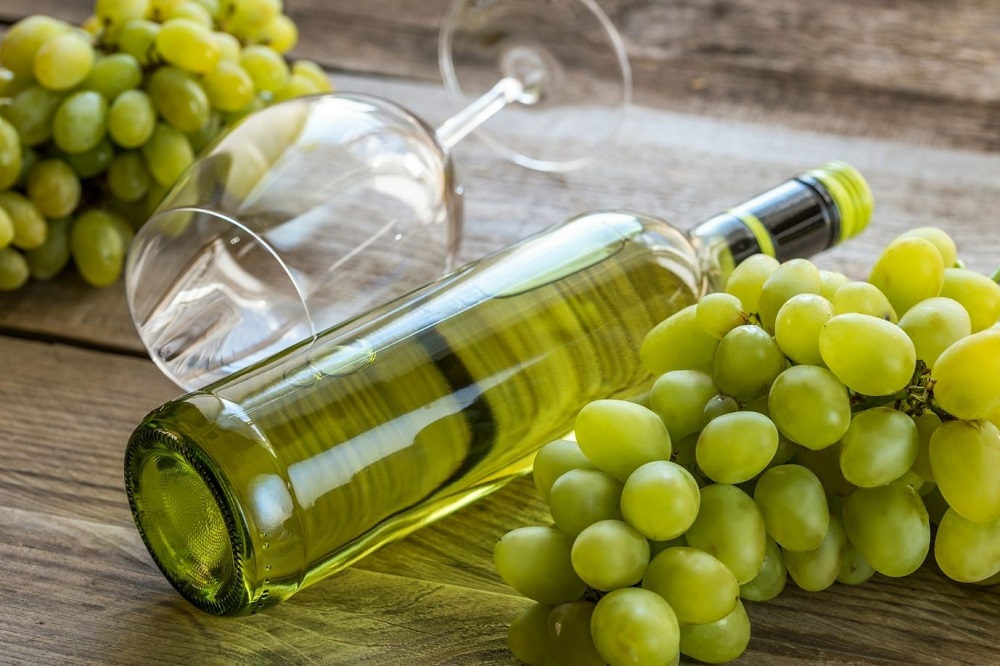
Overall, pale white wines are a great choice for anyone looking for a light and refreshing wine. They pair well with a variety of foods and are perfect for sipping on a hot summer day.
Medium White Wines
Medium-bodied white wines are the most common type of white wine, with a pale yellow-gold color. They are versatile and pair well with many different types of food. In this section, we will discuss two subtypes of medium white wines: fruity and oaky.
Fruity Wines
Fruity white wines are known for their bright, refreshing flavors. They are often made from grapes like Sauvignon Blanc, Chenin Blanc, and Viognier. These wines have a crisp acidity and are often described as tasting of peach, apricot, and pineapple.

One example of a fruity white wine is Vinho Verde, a Portuguese wine made from the Alvarinho grape. It has a light, effervescent quality and is known for its bright citrus flavors.
Oaky Wines
Oaky white wines are characterized by their rich, buttery flavors. They are often aged in oak barrels, which gives them a distinct vanilla and caramel flavor. These wines are often made from Chardonnay grapes, and can also be known as “butter bombs.
One example of an oaky white wine is White Rioja, a Spanish wine made from the Viura grape. It is aged in oak barrels for at least a year, which gives it a rich, complex flavor with notes of vanilla and spice.
It is worth noting that not all medium white wines are either fruity or oaky. Wines like Marsanne, Roussanne, and Pinot Blanc can be medium-bodied and have their own unique flavor profiles. Additionally, sweet wines like Sauternes and Tokaji can also fall into the medium-bodied category, despite their sweetness. Finally, aged Riesling can also be medium-bodied, with a complex flavor profile that includes notes of apricot, honey, and petrol.
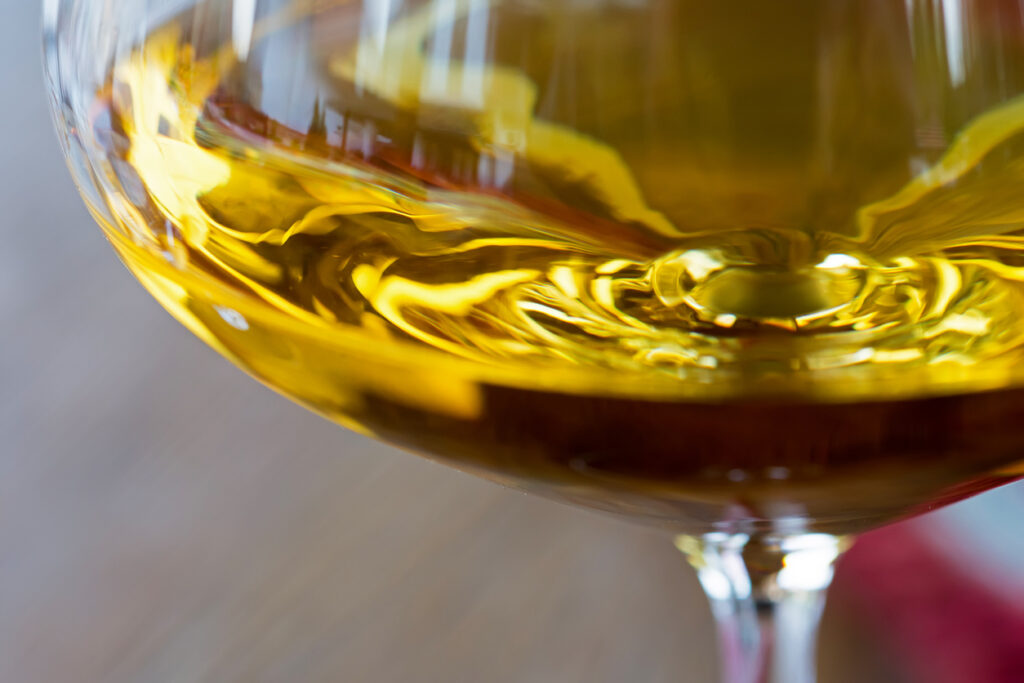
Deep White Wines
Deep white wines are known for their rich, complex flavors and full-bodied texture. These wines are typically darker in color, ranging from golden to amber hues. They are often aged for longer periods, allowing the flavors to develop and intensify.
Rich Wines
Rich white wines are characterized by their full-bodied texture and complex flavors. These wines are often aged in oak barrels, which imparts a rich, buttery flavor and a creamy texture. Oaked chardonnay is a prime example of a rich white wine, with notes of vanilla, caramel, and spice.
Another factor that contributes to the richness of these wines is lees aging. This is a process where the wine is left in contact with the yeast sediment, which imparts a nutty, toasty flavor to the wine. Some examples of rich white wines that undergo lees aging are gruner veltliner and chardonnay.
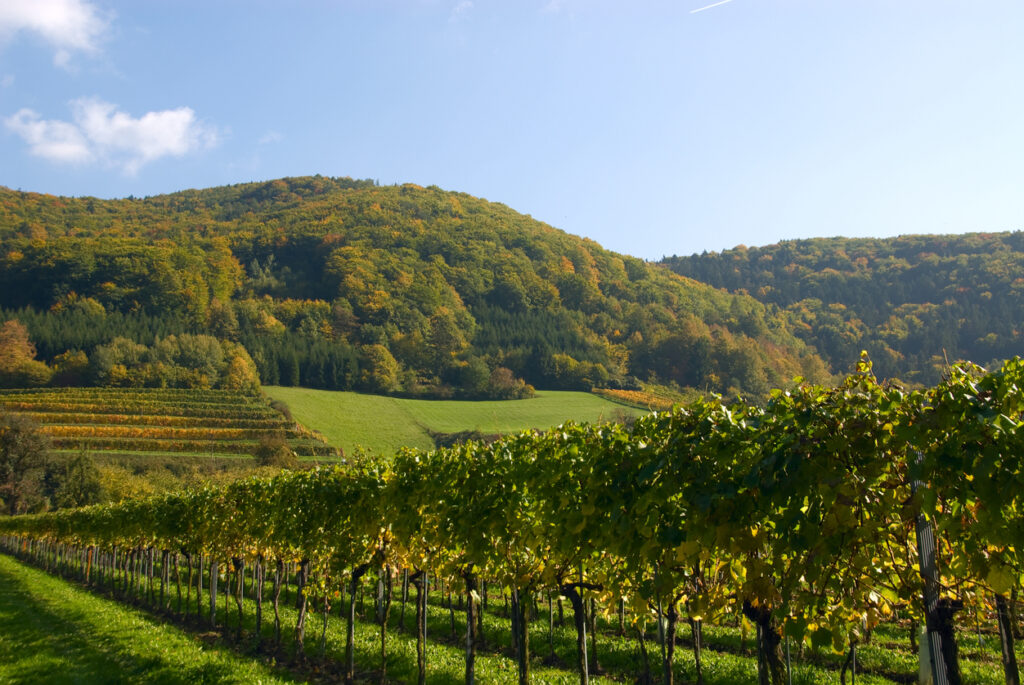
Fortified Wines
Fortified white wines are wines that have been infused with a distilled spirit, such as brandy. This process increases the alcohol content of the wine and also stops the fermentation process, leaving behind residual sugar. These wines are typically sweet and served as an after-dinner drink.
Sherry is a popular fortified white wine that comes in a range of styles, from dry to sweet. Pedro Ximenez is a sweet sherry that is made from sun-dried grapes, giving it a rich, syrupy texture and flavors of raisins and caramel.
Madeira is another fortified white wine that is known for its complex flavors and long aging process. Madeira is aged in oak barrels for several years, which gives it a distinct nutty flavor and a caramel color. It is often served as an after-dinner drink and pairs well with dessert.
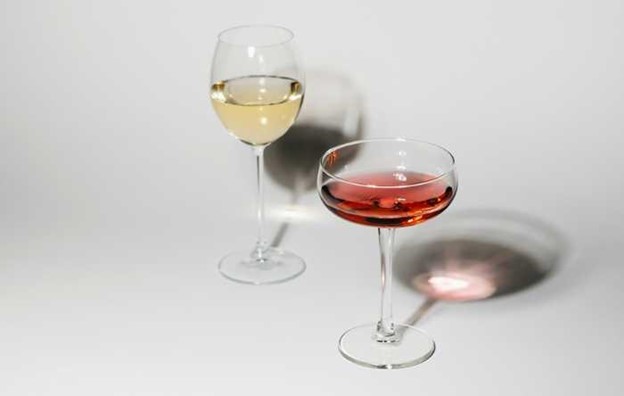
In conclusion, deep white wines are a category of wines that are known for their rich, complex flavors and full-bodied texture. They are often aged for longer periods, allowing the flavors to develop and intensify. Rich white wines are characterized by their full-bodied texture and complex flavors, while fortified white wines are sweet and served as an after-dinner drink. Some examples of fortified white wines are sherry and Madeira.
Conclusion
In conclusion, the color of white wine can provide some insight into its flavor profile, but it is not the only factor to consider. The color of a white wine can range from pale yellow to brown, depending on factors such as the age of the wine and the ripeness of the grapes used to make it.
Some white wines, such as Vinho Verde and Hondarribi Zuri, are known for their light, refreshing qualities and are typically pale in color. Others, such as Assyrtiko and Verdejo, can have a more golden hue and offer more complexity in terms of flavor.
When it comes to specific flavor notes, white wines can range from citrusy and bright (like limes) to more vegetal and herbaceous (like bell pepper and white pepper). Oaked Chardonnay can have a creamy, vanilla flavor, while Semillon grapes can add a honeyed sweetness to a wine.
Ultimately, the color of a white wine is just one piece of the puzzle when it comes to understanding its flavor profile. Tasting notes, grape varietals, and winemaking techniques all play a role in determining the final product. By considering all of these factors together, wine enthusiasts can gain a deeper understanding and appreciation for the world of white wine.

